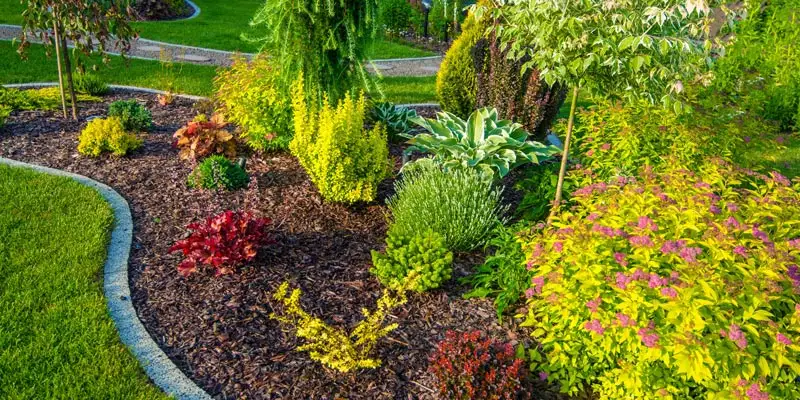Landscape Design - Truths
The Ultimate Guide To Landscape Design
Table of ContentsLandscape Design for DummiesThe Definitive Guide for Landscape DesignThe 45-Second Trick For Landscape DesignTop Guidelines Of Landscape Design
A yard can normally be separated right into 3 locations: public (the front lawn), personal (the back backyard), and service (typically the side yard). The place of activity locations depends largely on the type of location, the dimension of area needed, the type of task, and the preferred closeness to other tasks and frameworks.
The outdoors wall of your house typically acts as the very first wall surface or beginning factor of an outdoor space. Inappropriate usages should be separated, and associated tasks, such as food preparation and eating, ought to be assembled to make the lawn extra reliable and pleasurable. When utilizing hardscape to produce rooms, make use of construction product comparable to that made use of in your home for connection from the house right into the yard.
Linked spaces. Credit Score: Gail Hansen, UF/IFAS Utilizing similar hardscape attributes and duplicating plants draws the eye around the yard.
From a style point of view, plant materials have 3 major features in the landscape: visual, structural and practical. Aesthetically, plants create an aesthetically positive atmosphere and structurally plants arrange and define areas.
How Landscape Design can Save You Time, Stress, and Money.
For psychological convenience plants are made use of as physical or suggested barriers for privacy and safety and security. Physical barriers obstruct both the sight and access to an area and include fences, wall surfaces and plant bushes. Landscape Design. Indicated obstacles, typically reduced growing plants, obstruct accessibility yet not the sight (Number 9). Other features of plants include cleansing the air, stopping disintegration and soil loss, maintaining moisture in the dirt, and returning raw material to the dirt.
Physical and implied barriers. Credit: Gail Hansen, UF/IFAS For these reasons, the kinds of plants to be made use of (such as trees, hedges, or groundcovers) need to be chosen in the early stages of planning. Plant types are selected for their practical abilities to ensure that their future objective and required room can be considered at the same time.
The above airplane, the vertical aircraft and the ground plane ought to all be considered to develop room. As soon as the shape of a plant bed has actually been established, the plants need to be massed (grouped) and split to achieve visual unity and the wanted quantity of room. The size of a plant mass will rely on the total size of the backyard, the size of the individual plants in the mass, and the emphasis or influence wanted from the plant material.
Each plant mass is in front of, behind, or beside, another mass. Number 11. Horizontal plant layers. Debt: Gail Hansen, UF/IFAS Number 12. Vertical plant layers. Credit Scores: Gail Hansen, UF/IFAS Repeating plants within a mass and repeating masses with comparable plants ties the yard with each other. The specific plant attributes need to be considered to successfully layer and mass navigate to these guys plants.
Landscape Design Fundamentals Explained
All plant make-ups start with the main framework plants, the huge, primarily evergreen history plants-such as the trees and big shrubs. These plants different or enframe rooms, control the dimension of the area, and give the beginning factor for picking the appropriate attributes of the second layer, midground plants, for massing and infill.
Vital factors in the yard must be highlighted by the usage of one-of-a-kind plants, distinctive frameworks, or yard accessories. Noting thresholds or entryways to spaces can be finished with entrances, arbors, and steps, or via the use of unique and colorful plants. The kind and/or style theme of the garden will certainly frequently help figure out the essential points and just how they should be highlighted.
Other crucial locations visite site in the yard are focal factors, which is made use of to aesthetically organize a designed area. Various point of views or point of views can expose various make-ups in the landscape that may call for a range of focal factors.
The Basic Principles Of Landscape Design
Plant types. Credit Score: Gail Hansen, UF/IFAS After form, texture is the next dominant function of a plant; coarse, medium and fine appearances can be used for contrast and emphasis in the landscape.


The enjoyable scent of plants, the sound of wind in the trees, the audio and appearance of water, and the shades and appearances of sculptures, pots and yard furnishings all add to the experience of the yard. One information that is typically forgotten is the result of light on the looks of the plants.
The whole yard modifications in feature and look over the training course of the day, and the training course of a year, as the light and temperature level adjustment from early morning to evening and season to season. Plant option should think about a plant's growth rate, its fully grown size and form, and the maintenance it will certainly need.
It is essential to understand the eventual fully grown size of plants so they can be positioned in the right place and spaced appropriately when they are set up. Giving plants area to expand is a difficulty this post because the common mature size is usually based upon ideal growing conditions and the ecological conditions of a website may cause a plant to expand larger or stay smaller.